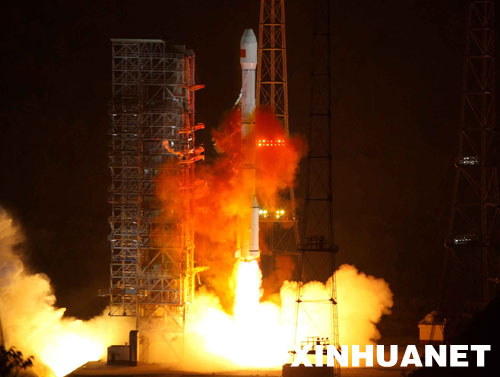China's new Tianlian I satellite is playing a crucial role in the Shenzhou VII manned space mission by maintaining communications between the spacecraft and mission control in Beijing, said Zhu Mincai, director of the Beijing Aerospace Control Center (BACC).
|

|
|
The Tianlian I satellite was launched from the Xichang Satellite Launch Center on April 25, 2008. |
Tianlian – which means link with heaven in Chinese – was launched on April 25, 2008, to provide data relay and monitoring services for satellites and spacecraft. "Using the relay satellite, we can see pictures of the astronauts in the module, make live calls to them, and monitor their physical condition, as well as the state of the spacecraft," said Zhu.
"Tianlian I is a great technological breakthrough for the aerospace industry."
Back on earth, BACC, the nerve center of China's Manned Space Program, controls all data transfer to and from the spacecraft and commands the flight. Orders to maneuver the spacecraft are sent from the BACC via the satellite.
Controlling a manned space flight is extremely complicated. Flight-control experts for all the different components of the Shenzhou VII mission – astronauts and their equipment, spacecraft, and satellites – are gathered in a continuous conference at BACC analyzing, discussing and monitoring the flight.
(China.org.cn by Wang Wei, September 28, 2008)